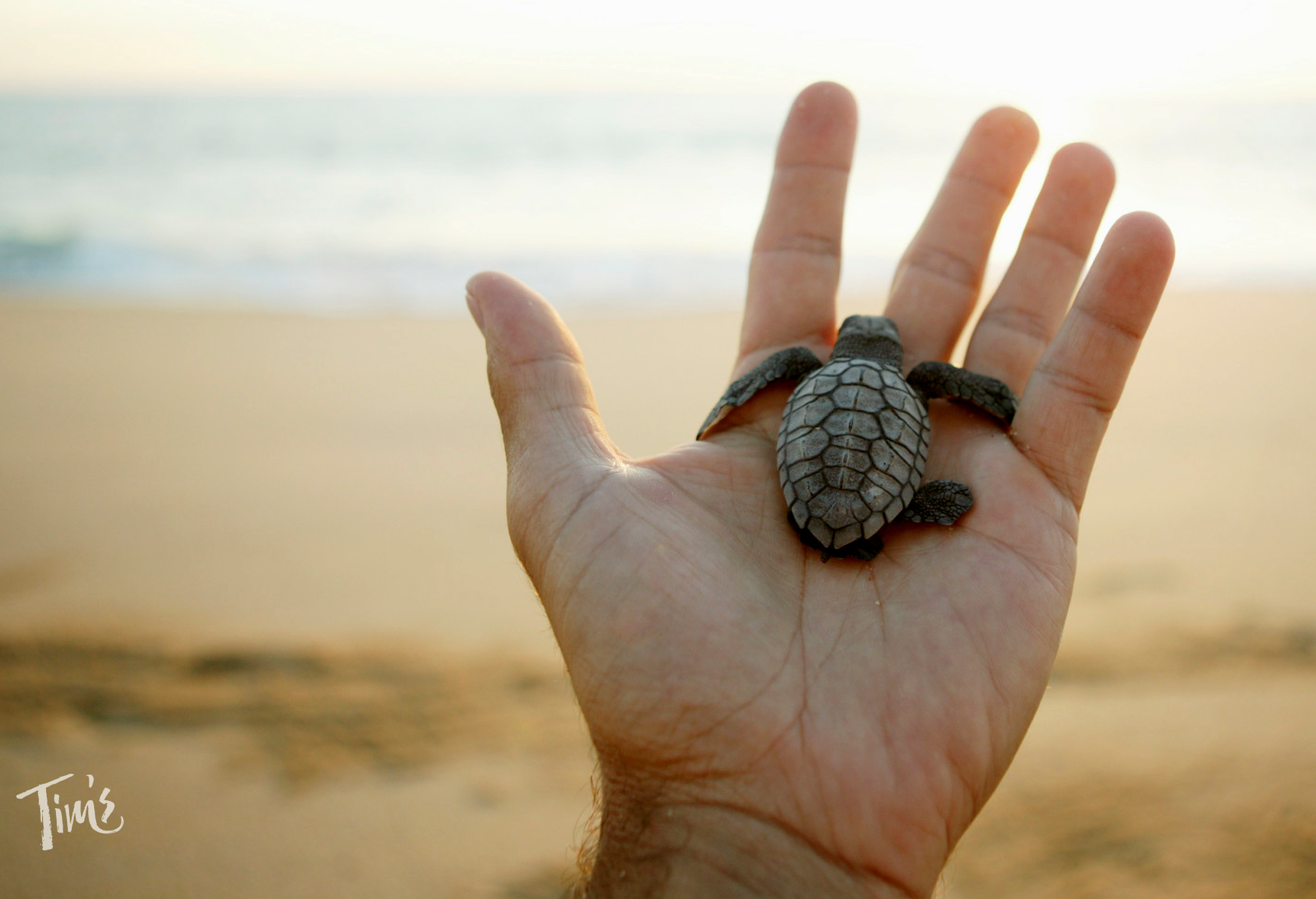Cancun Baby Sea Turtle Release Season is Here!
Last Updated on August 25, 2023 by Megan
Cancun Baby Sea Turtle Release Season is Here
Sea turtle release season, also known as sea turtle hatchling season, generally refers to the time of the year when baby sea turtles hatch from their nests and make their way to the ocean. The exact timing of sea turtle release season can vary depending on the species of sea turtles and their nesting locations. However, it typically occurs during warmer months when the ocean waters are relatively warmer, providing a better environment for the hatchlings.
Here are the general sea turtle release seasons for some common sea turtle species in various regions:
- Loggerhead Sea Turtles: Depending on the location, loggerhead sea turtle hatchlings can emerge from their nests from late spring to early fall. This can vary from May to September in many places.
- Green Sea Turtles: Green sea turtle hatchlings are often observed during the summer months, typically from June to August.
- Leatherback Sea Turtles: Leatherback sea turtles tend to have a more extended nesting season, with hatchlings appearing from late spring to early fall.
- Hawksbill Sea Turtles: Hawksbill sea turtle hatchlings usually emerge during the summer months, similar to the green sea turtles, primarily from June to August.
- Kemp's Ridley Sea Turtles: Kemp's ridley sea turtles have a relatively short nesting and hatching season, often occurring from May to July.
It's important to note that these are general guidelines and can vary based on the specific nesting site and environmental conditions. Cancun Sea turtle conservation organizations and authorities in various regions often monitor and protect sea turtle nests during the nesting season, and they might organize public hatchling release events to raise awareness about sea turtle conservation and provide a safer environment for the hatchlings as they make their way to the sea. If you're interested in witnessing sea turtle hatchling releases ask Abdiel and Paola to get you in touch with our conservation staff.
Best Time to See Sea Turles in Cancun
Sea Turtles arrive on the beach of Cancun for a safe place to nest and lay their eggs. Beginning in early May and ending by October, Sea Turtle season brings hundreds of these protected creatures to the shores of Cancun.
In particular, Loggerhead Sea Turtles come to our beach during this time of the year, and they are actually the most common Sea Turtle nester along the shores here.
While it can be an exciting moment to see Sea Turtles in the wild, there are several keys to keeping these protected species safe. If you're hoping to see these magnificent creatures in the wild during your Tim’s Ocean Condos vacation, here are a few things to keep in mind.
To help protect sea turtles and ensure their safe journey to the ocean, here are some steps people can take:
- Turn Off Exterior Lighting: If you're in an oceanfront area where sea turtles nest, it's important to turn off any exterior lights that can be seen from the beach. This includes porch lights, patio lights, and any other sources of illumination that could confuse the hatchlings.
- Use Proper Window Coverings: Close blinds or curtains in oceanfront homes during the nesting and hatching seasons. This prevents light from seeping out and confusing hatchlings.
- Avoid Using Phone or Camera Lights: If you're on the beach at night and want to observe sea turtle hatchlings, refrain from using your phone or camera lights. Instead, rely on natural moonlight to illuminate the area.
- Support Local Conservation Efforts: Many coastal communities have local organizations and initiatives dedicated to protecting sea turtles. You can support these efforts through donations or volunteer work to help ensure that sea turtle habitats are preserved and hatchlings have a better chance of survival.
- Spread Awareness: Share this information with friends, family, and fellow beachgoers to raise awareness about the importance of reducing artificial lighting near sea turtle nesting sites.
By following these guidelines, you can contribute to the conservation of sea turtles and help ensure that these incredible creatures have a better chance of thriving in their natural environment.
Ensure a clean beach
Prior to leaving our beach, kindly examine your surroundings to ensure that all your possessions, furniture, and any litter have been collected. Please be particularly cautious with plastic bags and balloons, as they pose a significant threat to sea turtles. Your efforts will contribute to maintaining the beach's cleanliness and safeguarding marine life.
Maintain a safe distance from the nest
Absolutely, maintaining a safe distance from sea turtle nests is crucial for the well-being of both the turtles and humans. Here are a few reasons why this is important:
- Minimize Disturbance: Sea turtles are sensitive creatures, and disturbances can cause stress, which may impact their nesting behavior or even lead them to abandon their nests. Keeping a respectful distance helps reduce the risk of disturbing their natural activities.
- Protect Eggs and Hatchlings: Sea turtle nests contain precious eggs that are vulnerable to human interference. Getting too close to the nests can inadvertently damage the eggs or lead to their destruction. Similarly, hatchlings emerging from the nests can become disoriented by bright lights or human presence, making it harder for them to find their way to the ocean.
- Prevent Injury to Humans and Turtles: Approaching sea turtle nests can be risky for both humans and turtles. Sea turtles have powerful flippers and beaks, and they can defend their nests if they feel threatened. Getting too close to a nesting turtle might result in unintentional injuries to both the animal and the person involved.
- Respect Wildlife Laws: Many places have wildlife protection laws and regulations in place that require people to maintain a specific distance from nesting sea turtles. By adhering to these rules, you are not only ensuring the safety of the turtles but also avoiding legal consequences.
Experience the joy of saving an endangered animal
Picture yourself walking along the beautiful sandy beaches of Cancun, the sunset casting a warm glow on the turquoise waters of the Caribbean Sea. As you stroll, you notice a small group of people gathered around something on the sand. As you approach, you realize it's a group of baby sea turtles — these majestic creatures are struggling to make their way back to the ocean.
Your heart races with a mix of concern and determination. You join the group, and with gentle hands, you help lift the baby turtle, cradling it with care. Its eyes meet yours, almost as if it senses your intention to help. The turtle's shell is a beautiful blend of patterns and textures, a living relic from a time long past.
With the guidance of our local conservation experts and volunteers, you learn how to properly handle the turtle. As a united team, you carefully carry the turtle across the soft sand and place it near the water's edge.
With a grateful heart, you watch as the baby turtle regains its strength, propelled by a sudden burst of energy, and it begins its journey back into the waves. It's a truly remarkable sight—the turtle's silhouette against the setting sun, a symbol of resilience and the power of human compassion.
The cheers and applause from those around you fill the air, a collective celebration of this small victory for nature. As the last glimpse of the turtle disappears into the water, you feel a sense of fulfillment, knowing that you've contributed to the survival of a precious species.

What kind of sea turtles are in Mexico
Sea turtles are a vital component of our marine ecosystem. They are often used as indicators of the health of our oceans. Seven of the entire world’s eight sea turtle species nest on the beaches of Mexico. Across the world, turtle species are already on the endangered species list. They have experienced a drastic decline in population of more than 80% in less than 20 years. Mexico has recorded a sharp decrease in the number of Leatherback turtle (Dermochelys coriacea) and has not been added to the critically endangered list.
The loggerhead sea turtle (Caretta caretta) is a species of sea turtle that is often found in the waters around Cancun, which is a popular tourist destination located in the Mexican state of Quintana Roo. Loggerhead sea turtles are one of the largest species of sea turtles and are known for their distinctive large heads and reddish-brown shells.
Here are some key characteristics and information about loggerhead sea turtles in the context of Cancun:
- **Habitat:** Loggerhead sea turtles inhabit both the open ocean and coastal areas. They are known to frequent warm and temperate waters, which makes the waters around Cancun's coastline a suitable habitat for them.
- **Nesting:** Loggerhead sea turtles are known for their nesting behavior. Female loggerheads return to the beaches where they were born to lay their eggs. In Cancun, and the surrounding areas of the Yucatán Peninsula, there are nesting sites where female loggerheads come ashore to lay their eggs in the sandy beaches. These nesting sites are important for the conservation of the species.
- **Nesting Season:** The nesting season for loggerhead sea turtles in the Cancun region usually occurs between May and October. During this time, visitors and conservationists have the opportunity to witness the nesting and hatching process. Many conservation efforts are put in place during this period to protect the nesting sites and ensure the safety of the eggs.
- **Conservation:** Loggerhead sea turtles, like many other sea turtle species, are considered vulnerable due to various threats such as habitat loss, pollution, accidental capture in fishing gear, and climate change. In Cancun, there are several initiatives and organizations dedicated to the protection and conservation of loggerhead sea turtles and their nesting sites. These efforts include monitoring nesting activities, relocating eggs to protected hatcheries, and educating the public about the importance of sea turtle conservation.
- **Tourism and Education:** Loggerhead sea turtles play a significant role in Cancun's tourism industry. Guided turtle-watching tours are offered during the nesting season, providing visitors with the opportunity to witness the nesting and hatching process while adhering to responsible wildlife viewing guidelines. These tours often emphasize the importance of conservation and how tourists can help protect these remarkable creatures.
- **Protection:** In Mexico, loggerhead sea turtles are protected under various conservation laws and international agreements. It is illegal to harm, disturb, or collect their eggs without proper authorization.
Overall, the loggerhead sea turtles in Cancun contribute to the region's natural beauty and ecological diversity. Efforts to conserve and protect these turtles are essential to ensure their survival for future generations and to maintain the balance of marine ecosystems.




